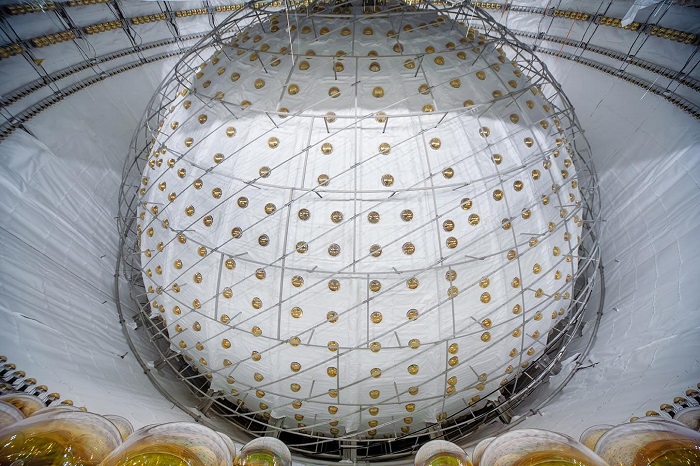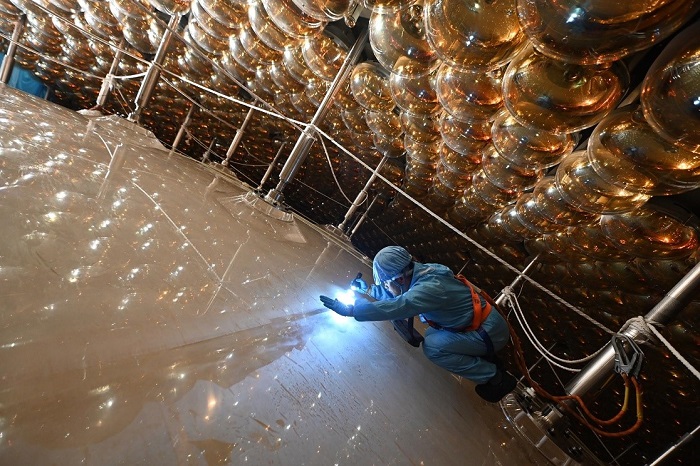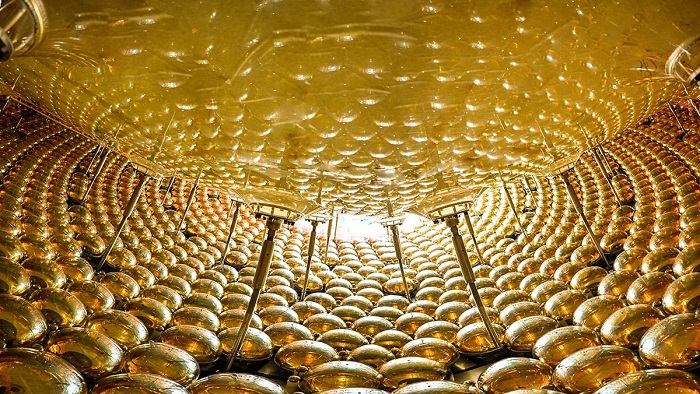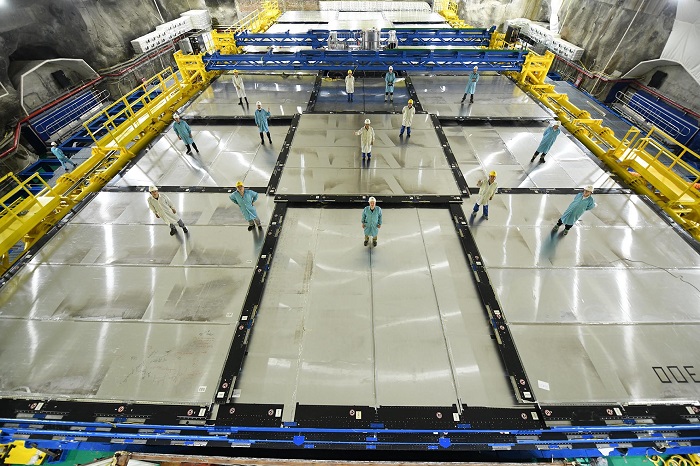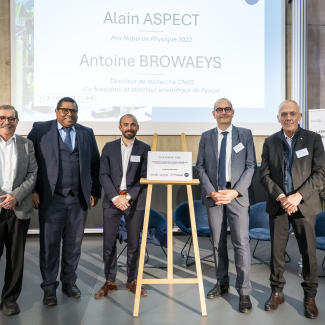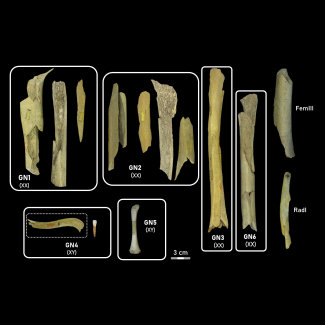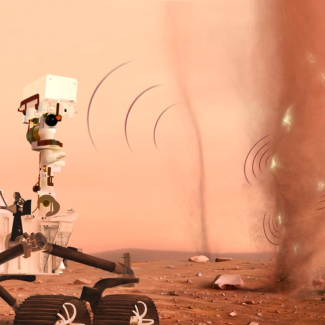
JUNO: a giant detector to unravel the mysteries of neutrinos
|
JUNO, a giant next-generation neutrino detector, has just begun collecting data. Over the next ten years, the detector, which is the result of an international collaboration based in China, with France represented by the CNRS, will track down neutrinos, one of the most puzzling elementary particles in the Universe, with unprecedented precision and performance. The data collected should enable a decisive step forward in our understanding of these particles, which provide a major key to determining the composition of the Universe and its evolution, as well as to the world of subatomic particles.
The commissioning of the giant JUNO detector (Jiangmen Underground Neutrino Observatory) is part of a long quest that began some 90 years ago, namely, to describe the properties of neutrinos and understand the role they play in the way the Universe works. They are the most abundant fundamental particles in the Universe: it is estimated that around 400 trillion neutrinos emitted by the Sun alone pass through us every second. The reason that we don't feel them is that they hardly interact with matter at all. As a result, they are extremely difficult to detect, which is why we still know very little about neutrinos and their properties despite decades of research. We do know that there are three different types of neutrino, that they have tiny masses - although no experiment has yet managed to determine these precisely-, and that they are able to change from one type to another as they travel, a phenomenon known as oscillation. To complicate things even further, neutrinos are neutral particles that do not produce any direct signal in detectors. Scientists have to resort to observing the result of their rare interactions with other particles. The giant JUNO detector, designed by an international collaboration involving several CNRS laboratories in France, uses one of these indirect detection methods on a very large scale and under optimal conditions in order to increase the number of particles detected and improve precision.
Located 700 metres underground between two major nuclear power plants at Yangjian and Taishan, which both continuously provide an abundant flow of artificial neutrinos, this world-leading detector is made up of a transparent spherical vessel 35.4 metres in diameter filled with 20,000 tonnes of a highly sensitive liquid scintillator in which any interaction of a neutrino with this medium gives rise to a flash of light. Some 43,212 photomultipliers (light detectors capable of detecting a single photon) placed all around the transparent sphere continuously monitor it, on the lookout for any flashes. It is the combined signal of these tens of thousands of 'eyes' that makes it possible to determine the properties of the neutrinos that cause the flashes. The spherical tank is itself immersed in a pool of ultra-pure water 44 m in diameter and is capped with a vast detector called the Top Tracker, whose job is to identify and characterise the presence in the detector of stray particles such as cosmic muons, in order to avoid any confusion with the neutrino signals from the power plants.
Over a period of some 10 years, the detector will mainly focus on characterising the phenomenon of neutrino oscillation as precisely as possible. In particular, the physicists will be seeking to determine the exact frequency at which the neutrinos from the nuclear reactors change from one type to another. The more accurate this measurement proves to be, the more the scientists will be able to infer other values that depend on it. One of these values is of particular interest: the neutrino mass hierarchy, in other words, which of the three types of neutrino is the most massive, and which is the least. The 'logical' answer would be that it follows the mass ordering of other particles, but neutrino physics is so baffling that scientists may well be in for a surprise in the form of a different hierarchy.
However, over and above the need to obtain a profounder understanding of neutrinos themselves, this long-term quest is of crucial importance in many areas of physics. In cosmology, neutrinos play a key role in many processes in the Universe, such as the extremely rapid inflation of the Universe in the very first moments of its existence, or the disappearance of antimatter in favour of matter. In astrophysics, neutrinos provide key evidence for the understanding of stellar cataclysms such as supernovae. They are in fact the first sign of such events, preceding the huge flash of light and alerting astronomers to the forthcoming explosion. Closer to home, neutrinos can help us better understand the nuclear processes at work in the heart of the Sun. Other neutrinos produced by the natural radioactivity of rocks provide us with valuable and unprecedented insights into events deep in the Earth's interior. JUNO will be the most sensitive detector of such neutrinos ever built.
The JUNO detector is the product of an international collaboration involving 74 institutions from Asia, Europe and America, and has some 700 members. It is led by the Chinese Academy of Sciences (CAS) via the Institute of High Energy Physics (IHEP). Its spokesperson Yifang Wang is also a CNRS Fellow-Ambassador. CNRS laboratories were involved at every stage of the process. From the design and construction of the detector to its operation, they played a key role in the start-up phase, and will continue to occupy a central position throughout the mission, through the management, maintenance and scientific exploitation of the experimental data.
In France, six CNRS laboratories are involved in the project:
|
Resources:
More information on the CNRS website:
https://www.in2p3.cnrs.fr/fr/cnrsinfo/juno-un-geant-pour-ecouter-la-discrete-valse-des-neutrinos
Infographic explaining the JUNO experiment: https://www.in2p3.cnrs.fr/sites/institut_in2p3/files/news/2025-09/infographie_JUNO.pdf
Numerous images of the construction of the experiment are available in the IN2P3 photo library: https://phototheque.in2p3.fr/index.php?/category/2032
Video:
Timelapse video of the detector's construction – JUNO Collaboration video
https://youtu.be/yDIsoEUiXzc
Photos: https://ihepbox.ihep.ac.cn/ihepbox/index.php/s/1N7SygyISferUIN
